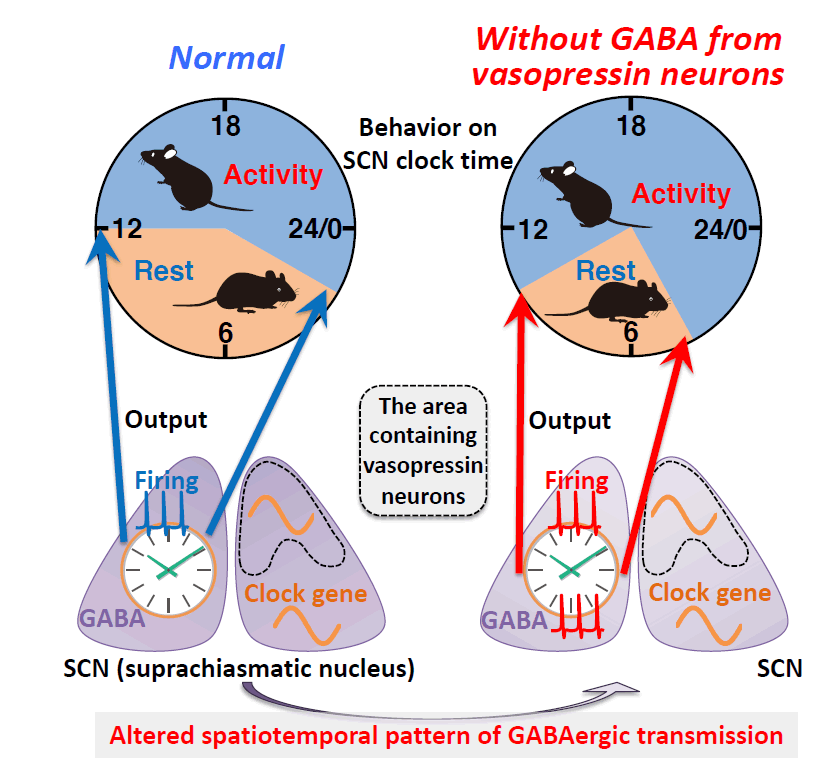A research group that included Associate Professor Takashi Maejima, Professor Michihiro Mieda and others at the Faculty of Medicine, Institute of Medical, Pharmaceutical and Health Sciences, Kanazawa University, in a research collaboration with Meiji University, Toho University and the National Institutes of Natural Sciences, has successfully shed light on one part of the control mechanism by which biological clocks set the time frame during which animals are active.
Although all nerve cells of the suprachiasmatic nucleus contain GABA (a neurotransmitter), it had not been possible to obtain a unified opinion on the role of GABA in the biological clock's functions. According to Mieda, "The suprachiasmatic nucleus is not a homogenous population of cells. It is organized from a number of types of GABA-containing nerve cells with different properties, but in research up to now it had been analyzed without differentiating the various types, and we concluded that this was one factor contributing to GABA's functions being unclear."
In light of that, up to now the research group had revealed that nerve cells in the suprachiasmatic nucleus that produce vasopressin (antidiuretic hormone) are important for determining the rhythm oscillation and cycles generated by the biological clock. In this latest research, the research group narrowed its focus onto GABA released from vasopressin-producing nerve cells, and analyzed its functions.
The analysis had initially been anticipating that based on abnormalities in the activity circadian rhythm of genetically-modified mice whose vasopressin-producing nerve cells do not release GABA, the molecular clock driven by the clock gene in the mice's suprachiasmatic nucleus would naturally differ as well. However, because the research group obtained an unexpected result--namely, that the molecular clock measured time more or less normally--it embarked on trying to clarify where the abnormalities lay.
The results of the analysis made it possible to clarify for the first time in the world that as a result of the actions of GABA released from vasopressin-producing nerve cells, activity within the suprachiasmatic nucleus is limited to appropriate time slots of the clock gene rhythm, and accompanying that the activity of animals occurs in appropriate time frames.

Expectations of development of on/off control technology
Mieda explains, that "We will seek to explain the detailed mechanism behind how GABA released from vasopressin-producing nerve cells forms the neural activity rhythm of the suprachiasmatic nucleus. Additionally, we hope to link this to the development of a technology for controlling the setting of the on/off timer of the biological clock by interventing communication between nerve cells by GABA within the suprachiasmatic nucleus. Of the circadian rhythm sleep disorders that affect people, some are thought to be caused by abnormalities in these on/off timer settings, and so the development of technologies such as this is expected to be applicable to treating and improving various disorders and health problems caused by lifestyle rhythm disturbances."
An extremely small area in the brain's hypothalamus. It performs the role of a master clock that commands the circadian rhythm of animals. There are approximately 20,000 nerve cells within the suprachiasmatic nucleus that release the neurotransmitter GABA. Each nerve cell is equipped with a rhythm-generating molecular mechanism (molecular clock), centering on the clock gene.
This article has been translated by JST with permission from The Science News Ltd.(https://sci-news.co.jp/). Unauthorized reproduction of the article and photographs is prohibited.




